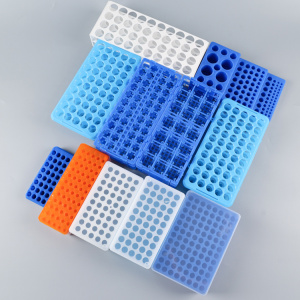Yongyue pipettes let you no longer worry about pipetting pollution
In pipetting operations, it is critical to prevent contamination in order to obtain reliable results. Potential contamination mechanisms need to be identified in order to develop targeted solutions.
Aerosols, which are solid or liquid particles suspended in a gas, are commonly generated in many laboratory activities, such as when pipetting with air-positive principle pipettes, and aerosols are an important source of contamination in pipetting operations. When using non-filtered pipette tips, aerosols can be transferred to the inside of the pipette and subsequently contaminate subsequent samples. Gentle and careful handling of Yonak pipettes can help reduce aerosol formation.
Three types of contamination in Yonak Medical pipette handling.
-Pipette-to-sample contamination
-Sample-to-pipette contamination
-Sample-to-sample contamination

1.Pipette-to-sample contamination
This type of contamination occurs when a contaminated pipette or pipette tip contaminates the sample.
Most manufacturers produce pipette tips with a variety of purity levels. Purity can be classified into three levels:
Without proof of purity
Proven to be free of contaminants such as DNA enzymes, RNA enzymes and endotoxins
Sterilized and free of microorganisms
Contaminants such as DNA enzymes, RNA enzymes, and endotoxins are difficult to remove by any sterilization method, so it is important to prevent contamination during manufacturing. Separate testing for the presence of these contaminants is required and is usually performed by a third-party laboratory. Post-manufacturing sterilization ensures that the tips are delivered to the customer free of any microorganisms (bacteria, viruses, etc.).
Pipette tips can also be a potential source of leachates (trace chemicals originating from materials or process equipment that can contaminate the sample). Potential leachates include heavy metals, UV stabilizers, antioxidants, pigments, release agents, biocides, and surfactants. High quality tips are made of 100% pure polypropylene, manufactured in a high quality manufacturing facility, and are free of leachates. It is recommended that you confirm this with the pipette tip manufacturer.
Pipette-to-sample contamination can be avoided in everyday laboratory work by following these simple guidelines.

Choose a pipette tip with the relevant purity level for the application.
Use (pre-sterilized) filter pipette tips or positive pressure displacement tips.
For some manufacturers' pipettes, safety cone filters can be used. The filter prevents aerosols from entering the pipette interior and contaminating subsequent samples.Always replace pipette tips after each sample operation.
Periodically autoclave or sterilize pipettes or components that may come in contact with samples.
2. Contamination of the pipette by the sample
This type of contamination occurs when particles of the transferred liquid or aerosols from the transferred liquid enter the interior of the pipette. In order to minimize the risk of sample-to-pipette contamination, the following precautions are recommended.
Always release the pipette button slowly to prevent aerosol formation and uncontrolled splashing of liquid inside the pipette tip.
Keep the pipette upright during pipetting and store the pipette upright. This prevents liquid from flowing into the pipette interior.
Use a filter pipette tip or positive pressure displacement tip to prevent aerosols from entering the pipette interior from the sample. Alternatively, a safety cone filter can be used on the pipette tips.
3.Sample-to-sample contamination
Sample-to-sample contamination (also called residual contamination) occurs when an aerosol or liquid residue from a sample is carried to the next sample. This contamination occurs, for example, when the same pipette tip is used multiple times. To avoid residual contamination.
Use a cartridge tip or positive pressure displacement tip to prevent aerosols from entering the pipette from the sample and then into the next sample. Alternatively, a safety cone filter can be used on the pipette tip.
Always replace the pipette tips after each sample manipulation.
If contamination of the pipette is suspected, autoclave or sterilize the pipette according to the manufacturer's instructions.

——



